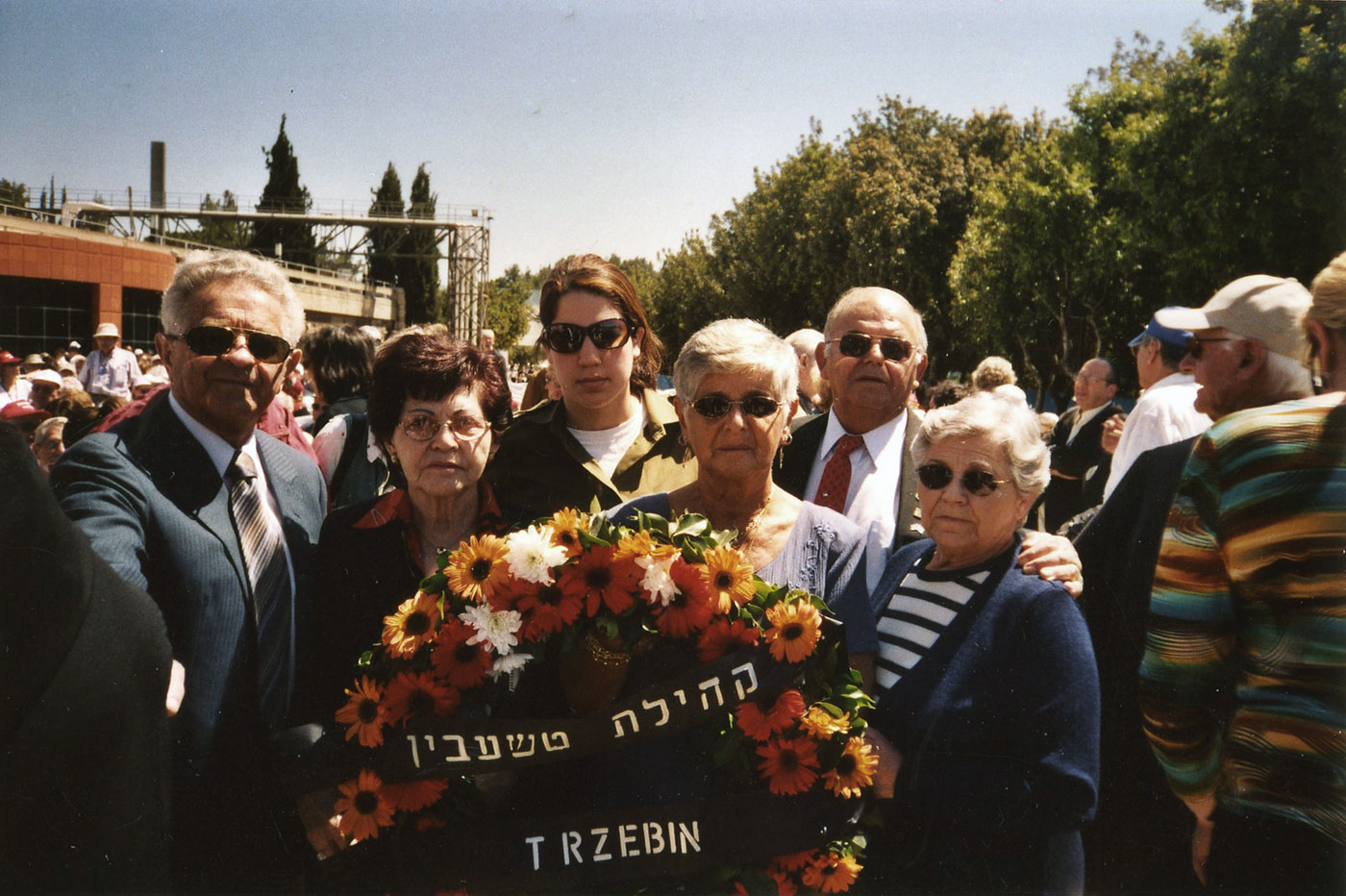Holocaust Survivors from Trzebinia in Israel
In the square next to the railway station, the Jewish travelers did not wait for us. The square was empty...
Benek Litner
After liberation, Holocaust survivors began to return to their hometowns and villages, in the hope of finding living relatives. In Poland, the destruction was visible in every direction. The few who returned to Trzebinia found only a handful of survivors, and those lucky enough discovered relatives that had survived.
Many came to the threshold of the house where he was born, where he had left his parents and loved ones. Standing, waiting in hope, that someone would open his door. But this miracle never happened. Some gathered their strength and knocked on the door. The door opened, and we were greeted with a cold stare, hostile and questioning. What do you want? The answer didn’t come … tears flowed at the scope of the destruction unfolding before our eyes.
Out of the entire Jewish population of Trzebinia, only 270 people survived the war. Some 160 emigrated to Israel, 80 to the United States and the rest went to Australia, France and other countries. The Trzebinian immigrants in Israel built themselves a new life, contributing their skills in a range of fields, including security, settlement, industry and trade.
Three immigrants from Trzebinia were killed in the War of Independence, fighting in the Haganah and IDF units: Yaakov Goldwasser – son of Meir and Rivka and the last remnant of his entire family – was killed on the way to Neve Yaakov; Aryeh Yedidya Gotleib – son of Nicha and Hermann-Zvi – was killed in the battle to liberate Haifa; and Yehudah Kohnreich – son of Rachel and Azriel – was killed in the battle of Metsudat Yoav.
While rebuilding their lives, the Trzebinia survivors began to deal with the task of commemorating those who had perished. When they arrived in Israel, they brought with them some clods of earth from the Jewish cemetery in Trzebinia, as well as ashes of those murdered in Auschwitz-Birkenau, to bury in the soil of Eretz Israel.
Those Trzebinia immigrants who had arrived in Israel before the war established a committee headed by Yitzhak Fleischer. When the survivors arrived, Moshe Klagsbald joined as a member of the committee, and later Elimelech Gross joined as well. At first the committee worked to helping their landsmanshaftmen financially, but the commemoration of the community and memorial of the victims soon became its central activity.
Commemoration
The Trzebinia immigrants in Israel erected memorials commemorating the victims in the Mount Zion Holocaust Basement, the Holon Cemetery and the Ben Shemen Forest. Those living in the US erected a memorial in New Jersey to commemorate the community. The first memorial to the Jews of Trzebinia was erected in the 1950s in the Holocaust Basement of Mount Zion, where the “Scroll of Destruction” – written by a scribe, commemorating the community and listing the names of its victims – is also buried.
While rebuilding their lives, the Trzebinia immigrants and survivors busied themselves with the task of commemorating the community. From the 1950s, they began to meet every year, on 22 Sivan, to mark the day that the Jewish community in Trzebinia was wiped out. 22 Sivan was the Jewish date of 7 June 1942, the day that the last of the Jews from the town were sent to the Auschwitz-Birkenau extermination camp and murdered in the gas chambers upon their arrival.
From 1984, remembrance services have been held next to the memorial to the Trzebinia martyrs in the Holon cemetery, where clods of earth and ashes from Poland are buried. In recent years, services have been held at the Chrzanów Hall on Trumpeldor Street, Tel Aviv. The most recent ceremony took place in 2006.
“Every year, less and less people come… today we don’t even get a minyan (quorum), there is nobody left to attend the service. Only two remain: Elimelech and I. We still go, every year, to the cemetery in Holon on 22 Sivan.”
Moshe Klagsbald
In the 1990s, commemoration activities also began in Poland. In Trzebinia, the community is memorialized at the local Jewish cemetery. In 1995, the Trzebinia immigrants in Israel planted a martyrs’ forest in the Ben Shemen region commemorating their community. One thousand trees were planted, and a memorial was erected in their memory.


